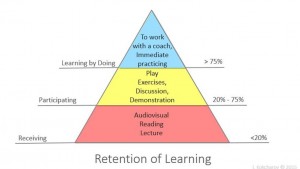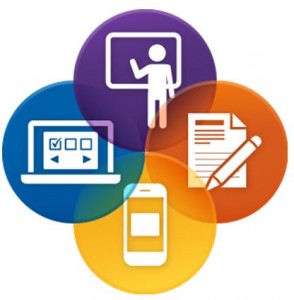Digital Government Revolution Introductory notes
Today there is an increasing demand of information in digital form.
Today’s digital revolution had its initial spark in the form of a government-sponsored initiative that created the Internet. A steady flow of private- and public-sector innovations and broad market adoption of standards-based technologies in both the government and the private sector have strengthened its foundations.
The training is carried out with the support of innovative technologies in pedagogical and didactic models.
Learning environments, languages, tools, and content are innovative thanks to the use of the latest technology. Innovative agile, open and interoperable platforms are available in the cloud environment, so therefore to be included in educational training collaborative tools such as: social spaces, eBooks and digital libraries and virtual places that exceed the physical barriers of the classroom by encouraging the sharing of experiences and methodologies .
New forms of knowledge are used by exploiting the potential that new technologies provide.
Training Methodologies Evolution

The training methodology deals with the methods aimed to design and implement training. It must be separated from the “method” because it can be defined as a body of practices, procedures and rules used by those who work following a “discipline”. The method can be define as a means or a way of proceeding, regularly and systematically to achieve something; “Feeling the road traced”.
In the 70’s, training took place in the classroom.
Towards the 80’s the dynamics of learning were not only based on the passage of the contents but above all on emotional and relational processes. Training is presented as an integrative function and a help in the management career path.
In the 90’s the formation moved out of the classroom: the Outdoor Training methods and exercises spread out solving difficulties not only intellectual but also experiential.
Since the early 2000s the formation went beyond the classroom by combining experiences of “classroom” with active and outdoor teaching methods with experiential learning and communication processes.
Today there is no more competition between classroom methods and outdoor methods and the methods are not replaced but integrated: “re-mediation.” The firm uses teams of specialists, Project Leader with a plurality of roles and expertise in back-office (content providers, educators) and front office (teachers, coaches, tutors, operators desk). The needs are: developing human capital with business counseling, tutoring, experiential learning, E-learning, assistance and personalized support.
The Distance Learning is defined as “the set of teaching methods in which, due to the physical separation between teachers and learners, teaching interactive phase (stimulus, explanation, questions, guide), also like the pre-active (choice of targets, completing the curriculum and teaching strategies), is conducted through paper, mechanical, electronic.
The advent of computer networks leads to the introduction of the new concept of Distance Learning Online, i.e. the distance education based on the principle of computer-mediated communication, and therefore the possibility of an exchange of ideas and information among people, regardless of place and time of interaction, leading to the transformation of information into new knowledge .
The network acquires a new perspective: not only taken as a transmission tool for teaching materials, but above all as a place where learning processes, characterized by a high degree of interactivity between all the actors involved, are created. Distance Education has begun to represent a mode of communicate through which it is possible to satisfy a demand for more and more generalized training in the specialization and retraining programs.
Front-end teaching

Classrooms are used when large groups must be taught the same thing at the same time or the task difficulty requires formal training. Before selecting this type of instruction, ensure that it cannot be taught effectively in another manner as classroom learning environments are normally costlier than other forms of learning. If possible, the instructors that will be teaching the program should help with the development process. This tends to lower the development cost and the initial implementation cost. All lessons should be fully outlined.
Classrooms may actually enhance learning in a blended solution composed of classrooms and e-learning. Sitzmann and Ely found some evidence the this type of blended solution increased learning by an average of 11% for both procedural and declarative knowledge. There seems to be something almost magical about blending the interactive and social nature of classrooms with the self-paced environment of e-learning.
Conventional classes can run from a couple of hours to a couple of weeks. Many tend to be large, with 20 to 40 learners, who have varying levels of knowledge and skills; note that the class size is not a particularly important factor when the goal of instruction is the acquisition of subject matter knowledge and academic skills. This type of training provides human interaction. If the class is not too large, then the trainer may determine the learners’ needs so the instruction can be adapted and adjusted accordingly.
Classroom settings permit the use of a wide variety of training methods, e.g. video, lecture, simulation, and discussion. Also, the environment, such as seating arrangements, can be controlled to create a climate conducive to learning and classrooms can accommodate a large number of learners. The main limitations may involve increased costs, e.g. space rental and travel. In addition, the classroom may be quite dissimilar to the job setting.
Distance learning
Distance education or distance learning is the education of students who are not physically present at a classroom together with the teacher.
Technologies
Although the expansion of the Internet blurs the boundaries, distance education technologies are divided into two modes of delivery: synchronous learning and asynchronous learning.
In synchronous learning, all participants are “present” at the same time. In this regard, it resembles traditional classroom teaching methods despite the participants being located remotely. It requires a timetable to be organized. Web conferencing, videoconferencing, educational television, instructional television are examples of synchronous technology, as are direct-broadcast satellite (DBS), internet radio, live streaming, telephone, and web-based VoIP.
In asynchronous learning, participants access course materials flexibly on their own schedules. Students are not required to be together at the same time. Mail correspondence, which is the oldest form of distance education, is an asynchronous delivery technology, as are message board forums, e-mail, video and audio recordings, print materials, voicemail, and fax.
Benefits
Distance learning can expand access to education and training for both general populace and businesses since its flexible scheduling structure lessens the effects of the many time-constraints imposed by personal responsibilities and commitments. Devolving some activities off-site alleviates institutional capacity constraints arising from the traditional demand on institutional buildings and infrastructure. Furthermore, there is the potential for increased access to more experts in the field and to other students from diverse geographical, social, cultural, economic, and experiential backgrounds.
Criticism
Barriers to effective distance education include obstacles such as domestic distractions and unreliable technology, as well as students’ program costs, adequate contact with teachers and support services, and a need for more experience.
Some students attempt to participate in distance education without proper training with the tools needed to be successful in the program. Students must be provided with training opportunities (if needed) on each tool that is used throughout the program. The lack of advanced technology skills can lead to an unsuccessful experience. Schools have a responsibility to adopt a proactive policy for managing technology barriers.
Virtual training
Virtual training is a training method in which a simulated virtual environment is used. In this environment an instructor is able to explain, show or test certain abilities that can contribute to the learning process.
There are different types of virtual training methods, divided in the instructor supported (virtual instructor led training) and the non-instructor supported.
In the instructor led training there are two screens; one for the instructor and one for the student. The instructors screen holds a number of tools to change and influence the environment. The students screen holds the controls over the decision / steering unit in this area. Where the instructor is free to create challenging scenarios in which all of the former know attributes can suddenly change.
Flight simulators are one of the first examples of virtual training.
The AIDA interactive educational freeware diabetes simulator is another type of virtual training environment, for learning about balancing insulin and diet in diabetes mellitus.
Blended training

Blended learning is a formal education program in which a student learns at least in part through delivery of content and instruction via digital and online media with some element of student control over time, place, path, or pace. While students still attend “brick-and-mortar” schools, face-to-face classroom methods are combined with computer-mediated activities. Blended learning is also used in professional development and training settings.
The terms “blended learning,” “hybrid learning,” “technology-mediated instruction,” “web-enhanced instruction,” and “mixed-mode instruction” are often used interchangeably in research literature.
Benefits
Blended instruction is reportedly more effective than purely face-to-face or purely online classes. Blended learning methods can also result in high levels of student achievement more effective than face-to-face learning. By using a combination of digital instruction and one-on-one face time, students can work on their own with new concepts which frees teachers up to circulate and support individual students who may need individualized attention.
Blended learning also have the potential to reduce educational expenses, although some dispute that blended learning is inherently less expensive than traditional classroom learning. Blended learning has can lower costs by putting classrooms in the online space and it essentially replaces pricey textbooks with electronic devices that students often bring themselves to class. E-textbooks, which can be accessed digitally, may also help to drive down textbook budgets. Proponents of blended learning cite the opportunity for data collection and customization of instruction and assessment as two major benefits of this approach. Blended learning often includes software that automatically collects student data and measures academic progress, providing teachers, students and parents detailed students data. Often, tests are automatically scored, providing instantaneous feedback. Student logins and work times are also measured to ensure accountability.
Criticism
Blended learning has a strong dependence on the technical resources or tools with which the blended learning experience is delivered. These tools need to be reliable, easy to use, and up to date, for them to have a meaningful impact on the learning experience. IT literacy can serve as a significant barrier for students attempting to get access to the course materials, making the availability of high-quality technical support paramount. Other aspects of blended learning that can be challenging is group work because of difficulties with management in an online setting. Reportedly the use of lecture recording technologies can result in students falling behind on the materials. In a study performed across four different universities, it was found that only half of the students watched the lecture videos on a regular basis, and nearly 40% of students watched several weeks’ worth of videos in one sitting.
From an educator’s perspective, most recently, it has been noted that providing effective feedback is more time-consuming (and therefore more expensive) when electronic media are used, in comparison to traditional (e.g. paper-based) assessments. Using e-learning platforms can be more time consuming that traditional methods and can also come with new costs as e-learning platforms and service providers may charge user fees to educators.



